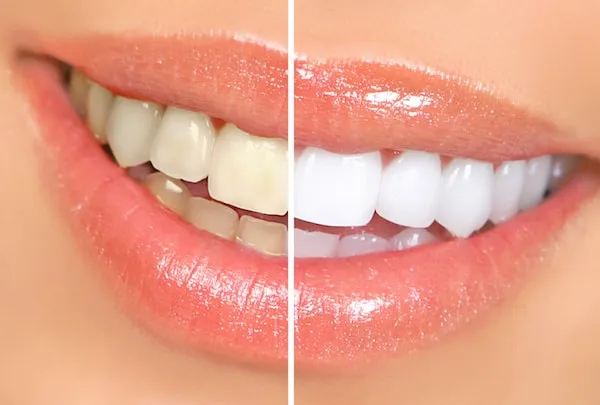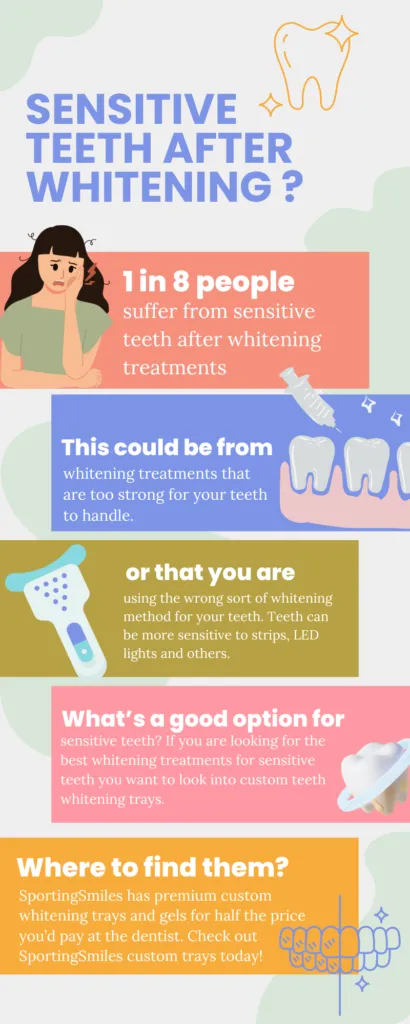What Causes Sensitive Teeth After Whitening
Teeth whitening is a popular cosmetic procedure, but it can sometimes lead to a side effect that many people experience sensitive teeth. Understanding the reasons behind this sensitivity is crucial for anyone considering or having undergone teeth whitening. Several factors contribute to this increased sensitivity, ranging from the whitening agents themselves to individual tooth characteristics. Knowing the underlying causes can help you make informed decisions and take proactive steps to minimize discomfort. This knowledge empowers you to enjoy a brighter smile without unnecessary suffering. Exploring the causes helps in understanding the different approaches to manage and prevent sensitivity.
Tooth Sensitivity Explanation
Tooth sensitivity arises when the inner layer of your teeth, the dentin, becomes exposed. Dentin contains microscopic tubules that lead to the tooth’s nerve. When these tubules are exposed, stimuli such as cold, heat, or pressure can easily reach the nerve, causing a sharp, temporary pain. This sensitivity is a common response to the whitening process because the whitening agents can temporarily affect the tooth’s structure. These agents penetrate the enamel to break down stains, but this can also irritate the nerves, leading to heightened sensitivity. Recognizing how sensitivity manifests helps you manage the symptoms effectively and seek appropriate care if needed.
The Role of Enamel

Enamel is the hard, protective outer layer of your teeth. It acts as a barrier, shielding the underlying dentin and nerve from external stimuli. The thickness and condition of your enamel play a significant role in how sensitive your teeth become after whitening. If your enamel is naturally thin, or if it has been eroded due to factors like excessive brushing, acidic foods, or teeth grinding, you are more likely to experience sensitivity. The whitening process can make existing enamel weaknesses more pronounced. Maintaining healthy enamel through proper oral hygiene, fluoride treatments, and a balanced diet can reduce the risk of sensitivity and preserve your smile.
Hydrogen Peroxide and Sensitivity
Hydrogen peroxide is the primary active ingredient in most teeth-whitening products. It works by oxidizing the stain molecules within the enamel, breaking them down and making your teeth appear whiter. However, hydrogen peroxide can also penetrate the enamel and reach the dentin, causing irritation to the nerves. The concentration of hydrogen peroxide in the whitening product influences the level of sensitivity experienced. Higher concentrations typically yield faster results but can also lead to more pronounced sensitivity. Understanding how hydrogen peroxide interacts with your teeth helps you make choices about whitening options that balance effectiveness with comfort.
Top 5 Facts about Sensitive Teeth After Whitening
Fact 1 Increased Sensitivity

Increased sensitivity to hot and cold foods and drinks is a common side effect. This is because the whitening agents can temporarily open up the pores in your enamel, allowing stimuli to reach the nerves more easily. The discomfort usually subsides within a few days to a couple of weeks after the whitening treatment. During this period, it is crucial to avoid extreme temperatures to minimize pain. Using sensitivity toothpaste can also help to soothe your teeth. Remember that the severity of the sensitivity can vary depending on individual factors and the strength of the whitening product used.
Fact 2 Gum Irritation
In addition to tooth sensitivity, some individuals may experience gum irritation. This can manifest as redness, swelling, or soreness around the gum line. Gum irritation occurs when the whitening agent comes into contact with the soft tissues of the gums, leading to inflammation. This is more likely to happen with at-home whitening kits where the trays might not fit perfectly, allowing the product to leak. If you experience significant gum irritation, consult your dentist. They can suggest strategies to protect your gums during the whitening process.
Fact 3 Temporary Discomfort
Sensitivity caused by teeth whitening is usually temporary. Most people find that their teeth return to normal sensitivity levels within a couple of weeks after the treatment. The duration of the sensitivity depends on several factors, including the whitening method used, the concentration of the whitening agent, and the individual’s oral health. Managing your diet and using sensitivity toothpaste during this period can greatly ease discomfort and allow you to enjoy your brighter smile more quickly. If the sensitivity persists or worsens, it is important to seek professional advice from your dentist.
Fact 4 Varies by Individual

The experience of sensitive teeth after whitening varies greatly from person to person. Some individuals may experience very little to no sensitivity, while others might find the discomfort quite noticeable. Factors such as the natural thickness of your enamel, the presence of any existing dental issues, and your overall oral hygiene play a role. Understanding that everyone’s reaction differs can help you manage your expectations and tailor your approach to pain relief. Your dentist can assess your individual risk factors and recommend the most appropriate whitening method for your specific needs.
Fact 5 Whitening Product Matters
The type and concentration of the whitening product significantly impact the likelihood and severity of sensitivity. In-office whitening treatments typically use stronger concentrations of hydrogen peroxide, which may lead to more intense sensitivity but also deliver quicker results. At-home kits come with varying concentrations, and over-the-counter options have lower concentrations. If you are prone to sensitive teeth, it is advisable to choose lower-concentration products or professional guidance on the best option for your needs. Your dentist can evaluate your oral health and help you select products that are both effective and gentle on your teeth.
How to Manage and Reduce Sensitivity
Using Sensitivity Toothpaste

Sensitivity toothpastes are specially formulated to reduce tooth discomfort. They often contain ingredients such as potassium nitrate or stannous fluoride, which help block the tubules in the dentin, preventing stimuli from reaching the nerve. Using sensitivity toothpaste for a couple of weeks before whitening can prepare your teeth and reduce sensitivity during the process. Continue using this toothpaste during and after your whitening treatment to maintain the protective effect. Brushing gently and avoiding abrasive toothpastes can also minimize further enamel erosion, which helps prevent sensitivity.
Avoiding Acidic Foods and Drinks
Acidic foods and drinks can erode enamel, making teeth more sensitive. During and after teeth whitening, it is advisable to limit or avoid these items. Examples include citrus fruits, carbonated beverages, and highly acidic juices. Acidic substances can irritate the exposed dentin, intensifying any discomfort. Opt for a diet rich in calcium and fluoride, such as dairy products and green leafy vegetables. These foods help strengthen enamel and protect your teeth from sensitivity. Drinking plenty of water helps to neutralize acids and rinse away food particles.
Professional Advice
Consult your dentist for personalized advice and recommendations. Your dentist can assess the health of your teeth and gums to ensure that you are a good candidate for teeth whitening. They can also recommend the most appropriate whitening method based on your needs and sensitivity levels. Your dentist may also provide professional fluoride treatments to strengthen enamel or prescribe stronger sensitivity toothpaste. They can also help you address any existing dental issues that might be contributing to the sensitivity. Regular dental check-ups help maintain good oral health, which is crucial for a successful and comfortable teeth whitening experience.
Selecting the Right Whitening Method

In-Office Whitening
In-office whitening treatments are performed by a dentist and often use higher concentrations of whitening agents. While they deliver quick results, they can also cause more pronounced sensitivity. The dentist will usually apply a protective barrier to your gums to minimize irritation. If you are concerned about sensitivity, discuss this with your dentist beforehand. They can adjust the treatment or offer preventive measures to reduce discomfort. In-office treatments provide the advantage of professional supervision and can be an excellent option for those seeking rapid and dramatic results.
At-Home Whitening Kits
At-home whitening kits typically involve custom-fitted trays or strips containing a lower concentration of the whitening agent than in-office treatments. This can mean less immediate sensitivity, but it may also take longer to see results. Following the instructions carefully is crucial to avoid gum irritation and ensure even whitening. If your teeth are particularly sensitive, you can try using the trays for shorter periods or less frequently. Always consult your dentist before using at-home kits to make sure they are appropriate for your specific oral health situation.
Over-the-Counter Options

Over-the-counter whitening products, such as whitening strips and toothpastes, are generally the gentlest option. These products contain lower concentrations of whitening agents and are available without a prescription. They are a good choice for those who are new to teeth whitening or have a history of sensitivity. However, they may not be as effective as professional treatments. Always read and follow the product instructions carefully, and be mindful of any irritation. If you experience sensitivity, stop using the product and consult with your dentist.
Prevention is Key
Preventing sensitivity involves a combination of proper oral hygiene, informed product selection, and mindful habits. Prioritize regular brushing and flossing to maintain healthy teeth and gums. Choose a soft-bristled toothbrush and use it gently to avoid enamel erosion. Consider using a sensitivity toothpaste to strengthen your teeth before and after whitening. Consult your dentist for professional advice and check-ups. They can identify any pre-existing issues and recommend the most appropriate whitening method for you. By taking these proactive steps, you can minimize sensitivity and enjoy a bright, healthy smile.
